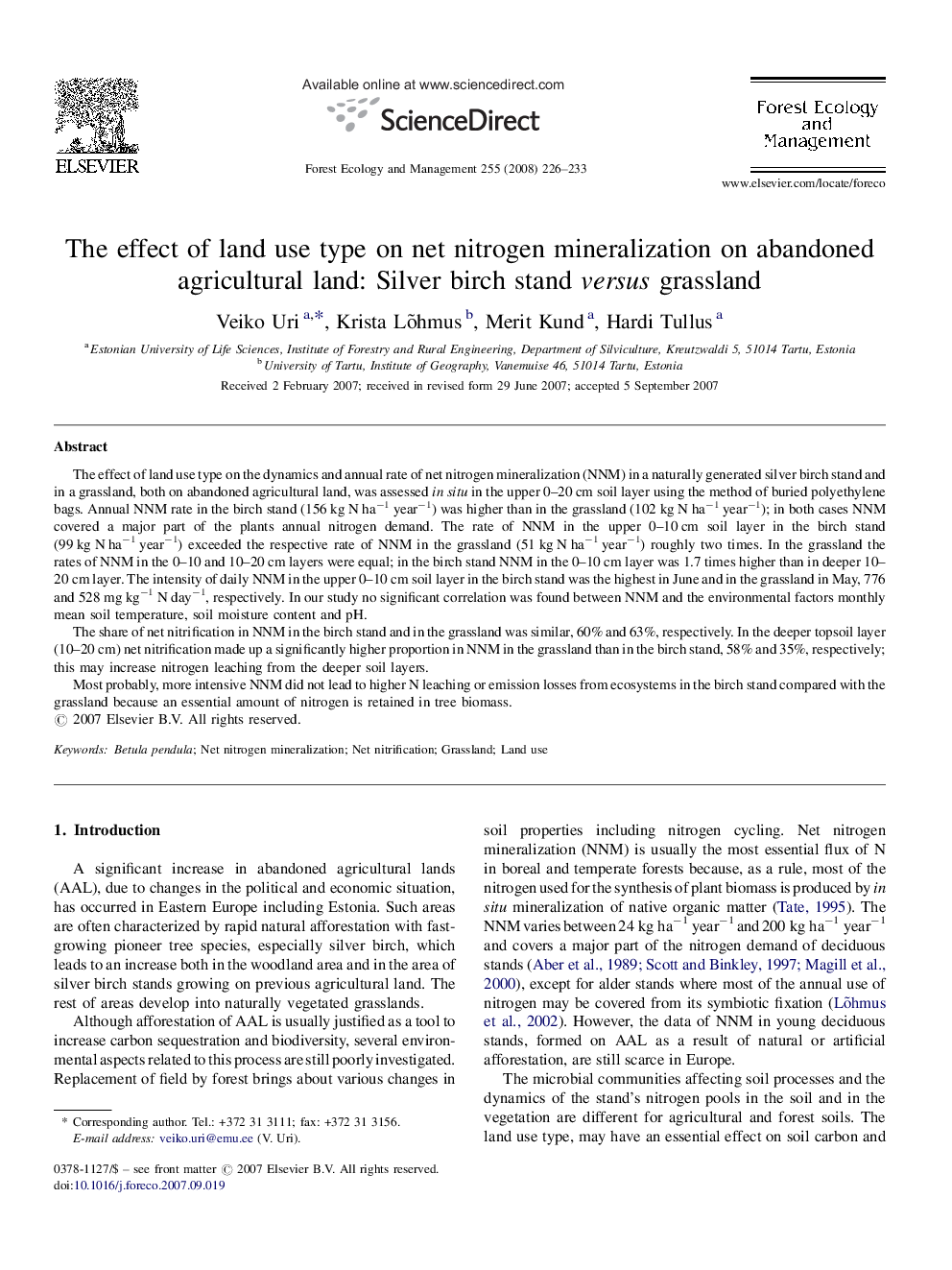| Article ID | Journal | Published Year | Pages | File Type |
|---|---|---|---|---|
| 89600 | Forest Ecology and Management | 2008 | 8 Pages |
The effect of land use type on the dynamics and annual rate of net nitrogen mineralization (NNM) in a naturally generated silver birch stand and in a grassland, both on abandoned agricultural land, was assessed in situ in the upper 0–20 cm soil layer using the method of buried polyethylene bags. Annual NNM rate in the birch stand (156 kg N ha−1 year−1) was higher than in the grassland (102 kg N ha−1 year−1); in both cases NNM covered a major part of the plants annual nitrogen demand. The rate of NNM in the upper 0–10 cm soil layer in the birch stand (99 kg N ha−1 year−1) exceeded the respective rate of NNM in the grassland (51 kg N ha−1 year−1) roughly two times. In the grassland the rates of NNM in the 0–10 and 10–20 cm layers were equal; in the birch stand NNM in the 0–10 cm layer was 1.7 times higher than in deeper 10–20 cm layer. The intensity of daily NNM in the upper 0–10 cm soil layer in the birch stand was the highest in June and in the grassland in May, 776 and 528 mg kg−1 N day−1, respectively. In our study no significant correlation was found between NNM and the environmental factors monthly mean soil temperature, soil moisture content and pH.The share of net nitrification in NNM in the birch stand and in the grassland was similar, 60% and 63%, respectively. In the deeper topsoil layer (10–20 cm) net nitrification made up a significantly higher proportion in NNM in the grassland than in the birch stand, 58% and 35%, respectively; this may increase nitrogen leaching from the deeper soil layers.Most probably, more intensive NNM did not lead to higher N leaching or emission losses from ecosystems in the birch stand compared with the grassland because an essential amount of nitrogen is retained in tree biomass.
